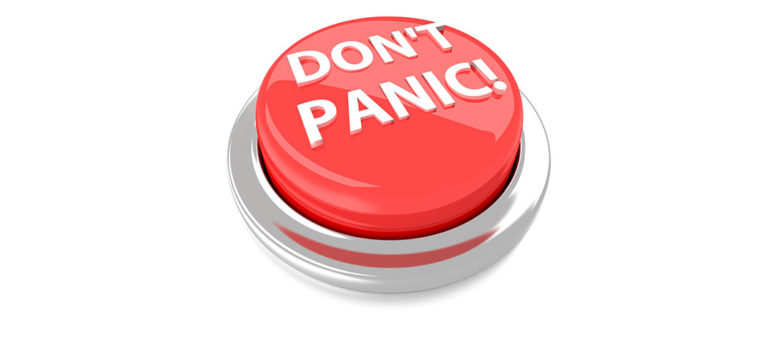First off, do you know how Black Friday started?
Here’s how the urban myth goes: The day after Thanksgiving was the day of the year when retailers finally turned an annual profit. Because their accounting was kept in ledgers which at the time used red ink to denote loses and black to note profits, it was termed “Black Friday.” Everything was finally “in the black.”
Sounds reasonable, right?
Only, this version of the story is from the 1980’s. The actual term dates back to a century earlier.
“Black” is an ancient term used to describe calamities, such as the original Black Friday of 1869 when a gold-buying scheme by two wealthy financiers caused the entire US stock market to crash. It was total bedlam in New York’s streets. Nearly a century later, police in Philadelphia commented on the chaotic shopping scene that had evolved on the Friday following Thanksgiving and dubbed it “Black Friday” because they had to work double-overtime to control the crowds.
The name stuck.
Nowadays, Black Friday has a much more positive spin: it’s a day for great deals. It will always, however, harken back to an insatiable wave of people going wild in the streets. Perhaps, with some tips, we can help you take the term back to its roots this year to bring a throng of crazed shoppers crashing through your doors too!
Here are our top 11 Black Friday selling tips:
1. Make it known that you’ll participate
First and foremost, not everyone participates. Outdoor retail giant REI ran a campaign last year boycotting the event (#optoutside) and has gathered hundreds of brands behind it, including Subaru and Google. If only we all had the revenue to abstain from one of the biggest shopping bonanzas of the year, huh? If you do plan to participate, advertise that fact and let people know that you’ll be open!
How can you get the word out? If you want to reach as many people as possible, try a Market Dominator postcard campaign that targets your entire zip code.
2. Publish your hours
Along with letting people know that you’ll be open, let them know when. Many shoppers get their start at 4 am and if that’s a little aggressive for you, let them know what they can expect. It doesn’t hurt you to be their second or third stop if it means a little extra sleep.
3. Leak your ads early
This is a publicity stunt to be sure, but it’s an effective one: If you have a mailing list or a decent number of website visitors, run your Black Friday ads now and then retract them. Publicly apologize that the campaign wasn’t meant to go up yet, and that the deals were meant to be kept a secret. This will generate excitement and those that only saw the apology will go looking for the ads and become intrigued.
So many big retailers do this that the financial website NerdWallet dedicates a page to them.
4. Early bird freebies
This is a common practice and an all-around savvy move. Only a few people will ever redeem the prizes but many hundreds will show up trying to claim them and odds are, they’ll purchase something while they’re there. Last year Cabela’s gave away BBQs, Fandango gave away movie tickets, and Walmart gave away … deodorant? Perhaps this was to make sweaty shoppers more bearable for their staff.
5. Sell both in store and online
Cyber Monday, Black Friday’s online cousin, emerged as ecommerce’s answer to post Thanksgiving deals, but now the two have blended together. Whether you sell online, in-store, or both, give your customers the same experience everywhere so that you can …
6. Prepare for savvy smartphone users
Customers expect an omnichannel experience. That is, they want you to recognize them as the same individual when they show up in person, on their computer, on their phone, and across all channels. Make sure that your web experience and prices match the in-store one because customers will not only hold it against you but they’ll also price-shop your competitors while standing in your store. Prepare your employees with the power to discount and answer these types of questions.
7. Arrange the most desirable advertised goods in the back
This is a classic supermarket store-stocking tactic, and it’s the reason that to get to produce, dairy, and meats in any supermarket, you have to walk to the three farthest corners. This forces you to see and smell everything else as you go. Along the way, you pile more in your cart. Take a page out of their book and place your most advertised items in the back.
8. Drop the price on desirable items as lures
One of the best ways to create word of mouth buzz about your Black Friday sale is to price a few things so low as to be impossible for people not to share. What if you offered microwaves for $1? Or a set of tires for $0.99? That’s so low that people can’t help but talk about it and spread the word. To preserve your margin however, offer them in …
9. Limited Quantities
Scarcity is the number-one psychological trigger that convinces people to buy on the spot. We all fear missing out on things and if you combine jaw-droppingly low prices at extremely limited quantities, you’re going to convince people to visit you first to capture the deal.
10. Create a line
Ever see a bunch of people outside of the Apple store and suddenly realize that a new iPhone just launched? Now, Apple could stock enough employees, open up stands outside, or find some way to sell them faster than in-person, but they choose not to. Why? Because lines create exclusivity! People want things that others want and if the line is so long that it’s down the block, others are going to feel left out and they’ll want in too. If you can manage it, hire someone to control the flow of traffic to give the impression that everyone in town is at your store right now.
11. Use offer codes to track your ads
Here at ProspectsPLUS we’re big believers in direct-response marketing. If you can’t track it and measure your ROI, it’s not good marketing. That’s why we highly recommend including unique offer codes on all of your postcard marketing campaigns in the run up to Black Friday so that you can calculate which ones brought in the most revenue and optimize for next year!
Black Friday is fast approaching – time to get to work
Unlike its historical ancestor, the Black Friday of today is a revenue boon. It’s a terrific opportunity for you to demonstrate your marketing chops! Try a few of these campaigns and bring the crowds crashing through your doors.
Quick – give us a call at 1 (877) 222-6010 or log in and launch your postcards today.
Forget the tactics. Need a strategy? Opportunity Knocks has your back – give them a call at 1 (866) 319-7109 and they’ll put your plan in order!










 Red – sense of urgency, encourages appetite
Red – sense of urgency, encourages appetite


